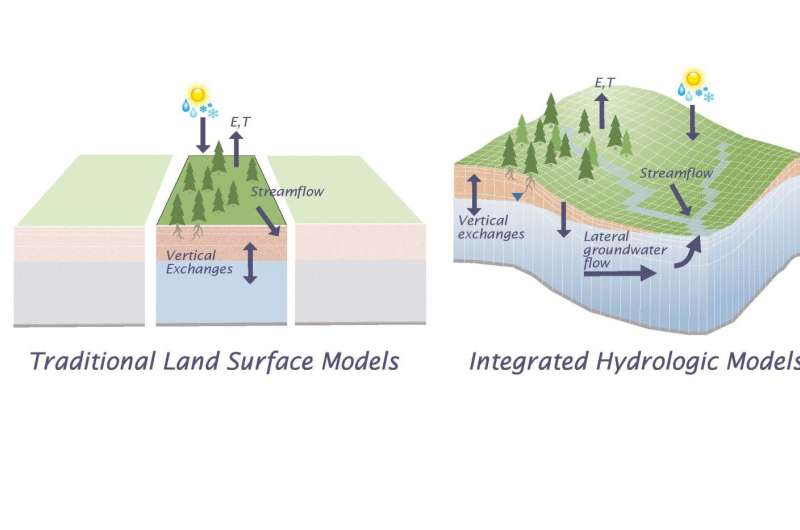Mines hydrology research provides 'missing link' in water modeling

Groundbreaking research on global water supply co-authored by Colorado School of Mines Hydrology Professor Reed Maxwell and alumna Laura Condon, now assistant professor of civil and environmental engineering at Syracuse University, appears in the July 22 issue of Science magazine.
The paper, "Connections between groundwater flow and transportation partitioning", tackles the issue of global freshwater supply by taking a unique approach in quantifying the water that plants release into the atmosphere through a process called transpiration in conjunction with evaporation of water from the soil. "Understanding how much fresh water we have on Earth seems like it should be an easy problem, but it's not," said Maxwell. "Since evaporation and transpiration often produce more water than surface flow from streams and rivers, this makes them very important for a fundamental understanding of seemingly basic questions like water flow".
Maxwell and Condon's model is unique because it integrates processes not often captured in existing water models, particularly the movement of water through the earth's subsurface, i.e. lateral groundwater flow, which can be contributed to both evaporation and transpiration. Through computer simulations of water flow across the continental US, the team found a significant increase in water supply from transpiration when including lateral groundwater flow. "This is one of our biggest findings", said Maxwell. "We see that disconnecting the groundwater movement from the simulation has a critical effect on matching other estimates of transpiration values."
The study's findings are paving the way for better global water models, which will greatly improve how scientists understand freshwater flows at continental scales. Groundwater flow seems to be the missing link in reconciling observations of plants' water usage with computer simulations, and may allow scientists to move towards a better understanding of how much freshwater is present on Earth.
More information: "Connections between groundwater flow and transpiration partitioning," Science, science.sciencemag.org/cgi/doi … 1126/science.aaf7891
Journal information: Science
Provided by Colorado School of Mines





















